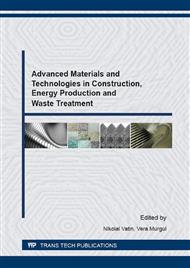p.28
p.33
p.40
p.47
p.53
p.62
p.70
p.76
p.84
The Strength Quantum Theory for Crystals with Nanodefects
Abstract:
The article examines the impact of nanodefects on the reduction of the crystals strength. A summary of the authors research results is illustrated by the analysis example of the NaCl crystal destruction process from the standpoint of strength quantum theory. As the base experiment is seen testing the dry and wet a salt crystal made by academician A. Ioffe. The authors research aim was a little-studied patterns of the crystal lattice destruction quantum mechanism. The article gives a brief historical background of the research in this area. The first section discusses the rystal cell dynamic characteristics change as a result of destruction. Assesses self-resonant frequency of an atom at a lattice point of the crystal before and after the destruction. In the second section of the article examines the relationship between the natural frequencies of the atoms in the lattice and elastic energy wich accumulated in the crystal body in the force loading process. The main attention is paid to theoretical modeling of the links strength between atoms in the crystal surface layer. We study the strength dependence of these relationships to the availability of nanodefects on the crystal surface. There are modeled bond strength to clean the crystal surface, as a result of the surface lattice electrification when atoms capture free electrons and for the case when jobs of atoms in the crack are filled with the external environment atoms. The calculations confirm the validity of the proposed theoretical model of reduction or the hanging of the crystals strength by the atoms interaction with the external environment.
Info:
Periodical:
Pages:
53-61
Citation:
Online since:
September 2016
Authors:
Keywords:
Price:
Сopyright:
© 2016 Trans Tech Publications Ltd. All Rights Reserved
Share:
Citation:


